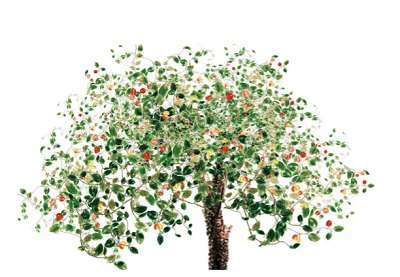“Father, why are these trees so special to you?” asked the prince. “Son, these trees grow in different parts of India and during my travels to different states, I have chosen the most delicious fruit trees of those regions. They all need different kinds of climate to survive. But, here, our soil is so rich and our gardeners so dedicated, that they have been able to raise all these trees. Look at this one. It is a ber tree.”

Ber
Sometimes on the way to school or walking around the edges of fields, we come across ber bushes. They are thorny, but the little red fruit with a stone in the centre is worth plucking because it is very tasty.
There are many different types of bers, some grow on trees with graceful, drooping branches whereas others grow on bushes. Some are round and others have a longish shape, but they all have a wonderful flavour. Ber trees can be about six metres tall and the bushes are only about one metre high. The ber tree and the ber bush are both thorny.
The trees have longer thorns and that is why when bers are ripe, people take a long stick with a sharp knife at the end of it, to cut down ripe bers. Sometimes, if the branch is shaken hard, the ripe fruit drops down and can be collected. Ber trees grow in dry places where it does not rain too much. The leaves are eaten by goats, camels and cattle.
Silkworms also eat the leaves of the ber. Another very interesting insect called the lac insect lives on the branches of the ber. The insect sucks the juice and secretes a red substance called lac, from which paints, varnishes and dyes are made.


